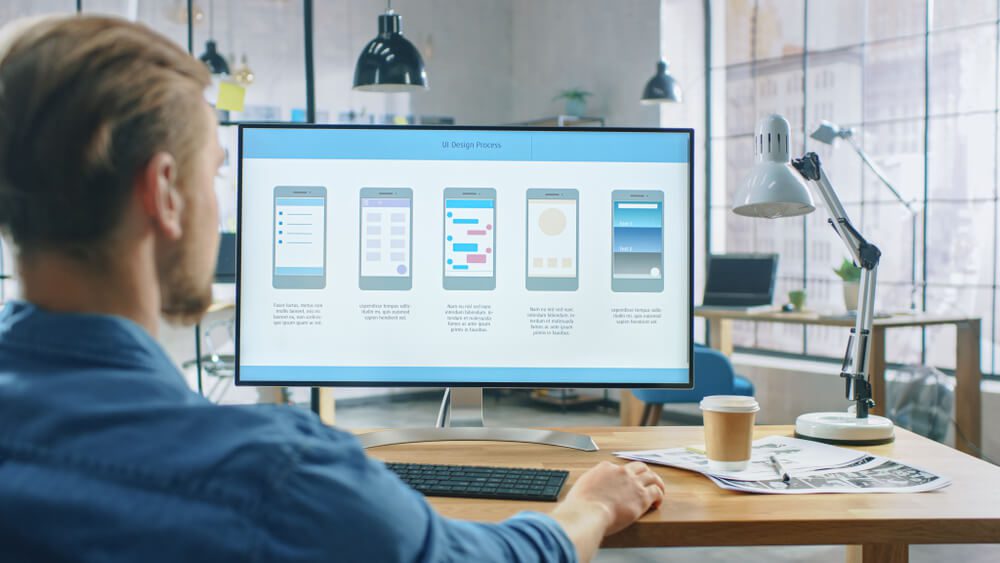
Learning About Mobile App UX Best Practice for Your Business
A mobile app can improve the way businesses interact with their customers. Companies can showcase products or services, provide customer service, and offer promos and perks all through a bespoke mobile app.
A mobile app development agency in Chicago reveals how using UX best practices help them make the best apps for their clients that:
- Create a seamless app onboarding process.
- Improve the app's visuals.
- Avoid unnecessary downloads.
- Adjust notification frequency and wording.
- Create a responsive app.
- Enhance navigation.
- Boost mobile app speed.
This guide is about the top seven best strategies for mobile app creation. Let’s go!
100+ companies trust us with their mobile app development needs. Watch the video below to learn why.
Create a Seamless App Onboarding Process
The app onboarding process is crucial for users' first impression and to their perception of its value and usability. It should immediately show them the app's purpose and how to use it effectively, leading to increased retention rates.
A smooth onboarding process builds trust with users; a confusing or information-heavy process may make them suspicious. Mobile app developers create seamless onboarding experiences with the following best practices:
- Focus on critical information and avoid overwhelming users with too many details.
- Use visuals such as clear, simple graphics and videos to demonstrate the app's features.
- Show users right upfront, the benefits of using the app.
- Tell users what to do next using a call to action (CTA) button at the end of the onboarding process.
- Offer a personalized onboarding process by asking users about their preferences.
- Conduct user testing and gather feedback to improve the onboarding process.
Improve App Visuals

Great visuals are vital in mobile app design and can enhance the user experience. With many apps in the app stores, good visuals can capture users' attention and make an app stand out.
A visually appealing design encourages people to engage with an app. Consistent visuals help users recognize an app, build trust in the company, and communicate a brand's identity, values, and personality. All these create a positive emotional connection with users and increase loyalty.
Expert mobile app developers know the importance of app visuals and use the following techniques:
- Avoid using too many colors, fonts, or graphic elements that might clutter the app's interface.
- Use minimalist design to highlight the app's essentials.
- Prioritize clear, high-quality images and graphics.
- Avoid jargon and use simple, clear language.
- Make the app more engaging with animation (but not too many!), to avoid slowing down the app.
Avoiding Unnecessary Downloads
Downloading and installing unnecessary apps can negatively affect the user experience because they consume time and storage space. Users may consequently have a negative experience and abandon the app altogether.
Additionally, installing too many apps can slow a device's performance and pose security risks. Developers should prioritize essential features and functionality to enhance the user experience and prevent cybersecurity attacks.
Here are some ways developers can avoid unnecessary app downloads:
- Create mobile-friendly websites.
- Use Progressive Web Apps (PWA), which are web apps that look like mobile apps but that function offline and can be installed on a user's home screen.
- Provide essential features on the website.
- Use deep links to direct app users to specific content so they can view app content without downloading it.
Adjust Notification Frequency and Wording

Notifications keep users engaged and informed about updates, new features, or significant events related to the app. However, if messages are too frequent or poorly worded, they can annoy users, leading to them disable or even uninstall the app.
Mobile app developers can adjust notification frequency and improve wording to enhance the mobile app's UX. Here are some ways to do it:
- Provide notification settings within the app to let users customize the notification frequency and choose the types of notifications they want to receive.
- Send notifications based on user behavior within the app to reduce the number of unnecessary messages and increase relevance.
- Use personalized messages in notifications to make them more effective.
- Make notifications clear and concise. Notifications should be short, easy to read, and to the point.
- Avoid using technical jargon or complex language.
- Avoid sending notifications too frequently. Consider the user's time and avoid sending too many notifications quickly.
Create a Responsive Mobile App
A responsive mobile app optimizes the user experience across multiple devices, various screen sizes, and orientations. Apps that work well on multiple devices, including smartphones and tablets, increase user satisfaction by providing easier access to content and features. More importantly, they are especially vital for users with disabilities or who require assistive technology.
Responsive mobile apps also help improve search engine optimization (SEO), leading to higher rankings in search results. All these mean that when designing a web, native, or hybrid app, do the following steps to create a responsive tool:
- Design apps with a mobile-first approach, starting with small screens and scaling to larger ones.
- Create responsive designs with Bootstrap or Foundation's pre-built components and styles.
- Use CSS media queries to set device-width-based styles for flexible layouts that adapt to different screen sizes and orientations.
- Optimize images and media for various screen resolutions.
Enhance App Navigation
Good navigation makes it easier and more intuitive for users to move around the app and complete their desired actions. Well-designed navigation can also help users discover new features or content they may not have known existed. This increases engagement and user satisfaction.
Mobile app developers should prioritize enhancing app navigation using these best practices.
- Prioritize the most important content or features within the app and make them easily accessible through the navigation.
- Use clear and concise labeling to help users quickly understand what each section and option does.
- Provide feedback to users on their actions, such as highlighting selected items or providing confirmation messages.
Boost Mobile App Speed

One of the most essential parts of mobile app development is speed. Mobile app speed directly affects UX and engagement. A slow app frustrates users, leading to negative reviews, uninstalls, and reduced engagement. Slow-loading apps discourage users from returning, leading to a lower retention rate.
Google uses mobile app speed as one of the ranking factors in search results. Slow apps tend to have low visibility in the app store search results, so improve app speed by keeping in mind the following:
- Reduce code size, request count, and unused code.
- Decrease image size to speed up the app, especially on slow internet connections.
- Use caching to reduce server requests.
- Improve app speed with CDNs, which improve latency and performance.
- Lower network latency, improve server-side rendering, and reduce unnecessary network requests to optimize server response time.
- Test and optimize app performance using tools like A/B testing, load testing, and performance analytics.
Summing Up
Follow mobile app UX best practices by creating a seamless onboarding process, improving app visuals, avoiding unnecessary downloads, and adjusting notification frequency and wording. Also, making a responsive app, enhancing app navigation, and improving app speed can significantly affect UX.
By promoting mobile app UX, your business can better connect with customers, enhance product or service delivery, and increase revenue. By partnering with an experienced mobile app development agency in Chicago, your business can acquire an effective and valuable app. Call Digital Authority Partners for expert mobile app creation.
Want To Meet Our Expert Team?
Book a meeting directly here




